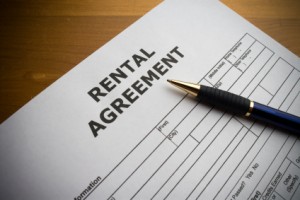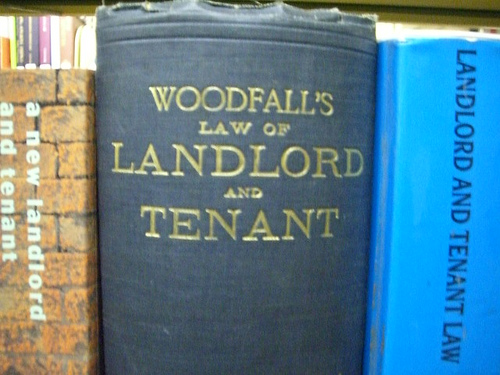Posted by Teresa on November 20, 2010 under Tenant Credit Checks, Tenant Screening & Background Checks | 
 When it comes to filling a rental vacancy, most landlords are happy to have several applications to choose from. But sometime, you don’t have a clear “winner” among your potential tenants. As the economy continues to slog along and unemployment shows no signs of easing up, it’s possible that the pool of potential tenants will just keep declining in quality.
When it comes to filling a rental vacancy, most landlords are happy to have several applications to choose from. But sometime, you don’t have a clear “winner” among your potential tenants. As the economy continues to slog along and unemployment shows no signs of easing up, it’s possible that the pool of potential tenants will just keep declining in quality.
What does a landlord do when the only applicants for a rental property have low income, no job, shaky references or no clear source of income?
The first thing to take a look at is each tenant’s credit history. If the applicants pay their bills on time, they will likely pay their rent on time. If all four have questionable credit checks, then compare incomes. For example, if Mary will be paying 2/3 of her income on the rent, but Jane makes enough to cover rent with just 1/3 of her take-home pay, many landlords would breathe easier signing a lease with Jane.
What about unemployed applicants? Landlords report they are seeing more applicants who report they are unemployed. Most receive unemployment benefits, but as everyone knows, they run out. Is an unemployed applicant a definite “no?” Not for some landlords. Devin says he checks other sources of income, such as child support and disability payments. If unemployment is a potential tenant’s sole source of income, he will typically deny the lease application.
For potential tenants who are self-employed, it’s not always easy to prove income. Ask for tax returns, bank statements, and several references—including, of course, former landlords. Money in the bank is a good indicator that the tenant lives below his or her means and knows the value of having cash reserves. And, note that the income reported to the IRS may or may not be indicative of the individual’s true income.
When landlords feel pressured to sign a lease with a less-than-perfect credit risk, it’s sometimes a little less painful to make it a six-month term rather than a full year’s lease. If the rent has been paid on time, you can always extend it for another six months. If not, it’s possible that the pool of potential tenants will have improved in six months.
Posted by Teresa on November 16, 2010 under Landlord Paperwork and Forms, Landlord Tips | 
 If you’re a new investment property owner, starting out with all your paperwork in place is a must-do. That means compiling a lease agreement before you show your rental property to a prospective tenant—no matter how badly you want or need to rent it.
If you’re a new investment property owner, starting out with all your paperwork in place is a must-do. That means compiling a lease agreement before you show your rental property to a prospective tenant—no matter how badly you want or need to rent it.
Depending on where you live or where your rental property sits, you’ll have specific requirements unique to that state or locality. Be sure to familiarize yourself with the requirements of your state. But in general, the same provisions apply to most residential lease agreements no matter where the property is located. Most important: you need to be sure your lease agreement protects your property, your other tenants, and your business and personal resources.
Here’s a handy list of important provisions to include in a lease agreement:
- Legal Description of the leased premises: Be thorough. Include address, apartment number, city, state and zip code
- Term of Lease, including starting and ending date, with a provision to terminate early in accordance to provisions of the lease;
- Use and Occupancy: Explain how the property may be used (i.e. “for residential purposes”) and a list of names of authorized occupants.
- Rent Payment: State the amount of the rent, how it is to be paid, and penalties for late payments and insufficient funds. Consider a statement that no partial rent payments will be accepted (to avoid any problems if eviction becomes necessary).
- Security Deposit: state the amount of the deposit due upon signing the lease, as well as conditions for return of the security deposit.
- Default: Explain events of default and remedies.
- Utilities: State who pays for which utilities, including gas, telephone, cable, internet, electricity, water, sewer and trash pickup.
- Covenant of Quiet Enjoyment: This explains that the tenant, upon fulfilling his or her obligations under the lease, may peaceably and quietly enjoy the premises without interference by the landlord or a representative thereof.
- Assignment or Subletting: State whether or not the tenant is allowed to assign the lease or sublet the property, and if so, set the conditions under which they may.
- Pets: State whether or not pets are allowed and any restrictions related to type, size, breed, number, etc. Also include the amount of any required pet deposit or fee and conditions for return at the end of the lease.
- Maintenance, Damage and Alterations: States what maintenance the property owner is responsible for, what the tenant is required to do to maintain heating and plumbing systems, when routine maintenance inspections will be conducted, conditions under which the property owner may enter the unit for emergency repairs, and what alterations (paint, for example) are allowed.
- Insurance: Explain what type and level of renter’s insurance is required, if any.
- Abandonment: Defines what may be considered abandonment of the property by the tenant, and the landlord’s rights when it occurs.
- Right to Enter Premises: States when and under what circumstances the property owner or representative will be allowed to enter the rental unit, i.e., number of hours or days of notice.
Other notices, indemnities and covenants are likely to be required in a particular state or by your attorney. It’s always best to have legal counsel review your residential lease prior to using it.
Any forms or information provided by E-Renter USA is not intended to replace legal advice. You are advised to consult an attorney in your area, and to check all local and state regulations.
Posted by Teresa on September 18, 2009 under Landlord Paperwork and Forms, Landlord Tips | 
 The relationship between landlord and tenant should be strictly a business one. Landlords must abide by a variety of federal, state, and local laws designed to protect tenants. Breaking a law, even unintentionally, can spell big trouble to a landlord. And rental property is too valuable to allow tenants to occupy it without the full protection of a legally binding agreement. It’s a mistake to let property without a proper rental agreement or lease. To do so opens a landlord to a great deal of risk, possible financial loss, and even litigation.
The relationship between landlord and tenant should be strictly a business one. Landlords must abide by a variety of federal, state, and local laws designed to protect tenants. Breaking a law, even unintentionally, can spell big trouble to a landlord. And rental property is too valuable to allow tenants to occupy it without the full protection of a legally binding agreement. It’s a mistake to let property without a proper rental agreement or lease. To do so opens a landlord to a great deal of risk, possible financial loss, and even litigation.
Lease or Rental Agreement?
A rental agreement allows a tenant to occupy property for a short period, often 30 days. And, it allows the landlord to increase the rent, change the terms, or terminate it altogether with a short written notice (usually 30 days, but that depends on each state’s laws). This type of agreement renews automatically at the end of the 30 days, unless the tenant or landlord gives written notice that it will end. This is a typical month-to-month type of rental situation.
A lease obligates both parties to a set of conditions and terms for a set period of time, usually one year. During the term of the lease, the landlord cannot raise the rent, and the tenant cannot move out, unless each party operates within terms of the lease that cover these areas. Landlords cannot ask tenants to move out until the lease expires. Either party can decide to not renew the lease with proper notification. Breach of the lease terms can result in eviction of the tenant by the landlord, or litigation between the parties.
Typically, the lease covers areas such as rent amount, term, rent due date, parking regulations, property care and maintenance, landlord entrance, pet policy, and other legal matters.
Rental agreements are more common in areas with high turnover, or where rents are increasing and rentals are in short supply. Leases are preferred by landlords where vacancy rates are higher or where tenants are harder to find.
Whether you decide to use a rental agreement or lease, the important thing is to make certain you are fully protected under a solid and binding legal document.
Remember, you are within your rights when
screening tenants prior to leasing. For more landlord resources, including forms and information on
tenant screening, turn to
E-Renter.com. You’ll know that you have the best possible tenants when you
prescreen tenants.
 When it comes to filling a rental vacancy, most landlords are happy to have several applications to choose from. But sometime, you don’t have a clear “winner” among your potential tenants. As the economy continues to slog along and unemployment shows no signs of easing up, it’s possible that the pool of potential tenants will just keep declining in quality.
When it comes to filling a rental vacancy, most landlords are happy to have several applications to choose from. But sometime, you don’t have a clear “winner” among your potential tenants. As the economy continues to slog along and unemployment shows no signs of easing up, it’s possible that the pool of potential tenants will just keep declining in quality.

